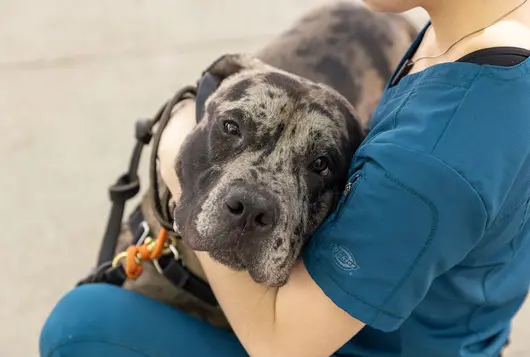Spotlight on Therapeutics: Apomorphine, Vitamin K1 & Benzodiazepines

Apomorphine, Vitamin K1 and benzodiazepines are all commonly used to help decontamination and treat toxicoses, so the ASPCA Animal Poison Control Center provides this overview to help you polish your knowledge of these therapeutics.
Apomorphine
Apomorphine, a centrally acting emetic, can potentially be very helpful in asymptomatic dogs who have recently ingested toxins because it helps prevent absorption by inducing emesis.
Emesis in dogs is mediated through dopamine receptors in the chemoreceptor trigger zone, and apomorphine stimulates these receptors and causes vomiting.
Apomorphine can cause sedation, which in some cases can be excessive and make emesis unsafe due to the risk of aspiration. Naloxone can safely be given to patients to reverse this sedation without reversing the emetic effects of the apomorphine.
Note: Apomorphine is not effective for use in cats.
Vitamin K1
Vitamin K1 is used to treat coagulopathy caused by anticoagulant rodenticide toxicosis or warfarin overdoses. These anticoagulants block Vitamin K dependent clotting factor synthesis by inhibiting the Vitamin K 1-2,3-epoxide reductase enzyme. This halts the recycling of Vitamin K1 and causes a deficiency.
Supplementation with high-dose Vitamin K1 corrects this deficiency. Vitamin K1 is not stored in the liver, so daily or twice daily dosing is indicated. With cases of recent exposure to an anticoagulant, it can be used to prevent clinical signs from developing.
In animals with evidence of active bleeding, it should be noted that it will take 6-12 hours to start producing additional clotting factors—and appropriate supportive cares and plasma or blood transfusions should be considered until the prothrombin time (PT) returns to normal.
Vitamin K1 can also be used with coagulopathy secondary to liver failure (such as with severe xylitol toxicosis).
Benzodiazepines
Benzodiazepines increase the action of aminobutyric acid (GABA) by binding to A-type GABA receptors and opening the membrane channels, allowing the entry of chloride ions and hyperpolarizing the cell. The increased GABA activity results in CNS depression and depressed spinal reflexes.
Benzodiazepines are useful for both their antiepileptic and sedative properties when used to treat toxicoses in veterinary patients, and are indicated for controlling seizures in toxicity cases.
Note: Benzodiazepines should be used with caution to control signs other than seizures with amphetamines, as they can worsen the disorientation and other stimulatory signs. They should also be used with caution with isoxazole mushroom toxicosis, as they can cause respiratory depression and even apnea.
More Lifesaving Resources
We have lots more on this subject:



